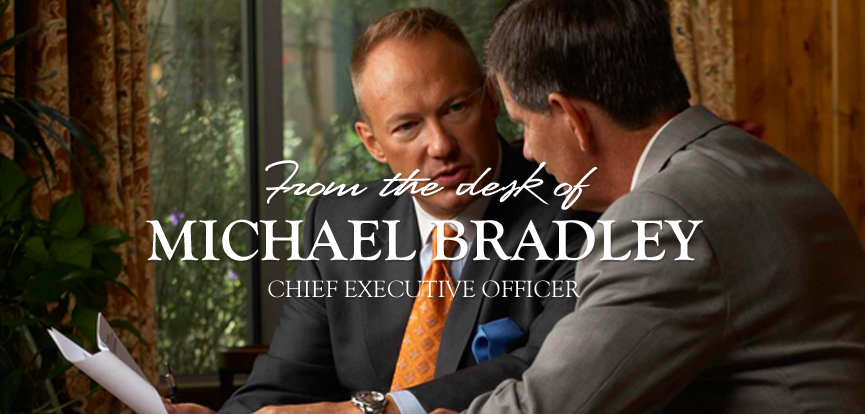
A Few Things You Might Not Know About Me
Posted on April 20, 2022
Planning and Guidance, Tailored To Your Life and Goals
Beyond The Money
Posted on October 30, 2014

Easy Monetary Policy: Wind In The Sails Of A Halted Economy
One of the primary responsibilities of central banks is to manage economic growth through monetary policy. In broad terms, monetary policy is controlling a country’s money supply. For example, when businesses become nervous about the future and we see a decline in spending and investing, a central bank may encourage borrowing and spending by lowering rates, changing reserve requirements, or employing other tools. This is called monetary easing. A central bank can also tighten monetary policy when the economy begins to grow too fast or inflation rises too high. Tightening monetary policy often entails raising rates and raising reserve requirements to discourage borrowing and spending.
Since late 2007, the Fed has pursued an easy money policy. Early on, when a near-zero federal fund rates failed to encourage recovery, the Fed began to employ unconventional monetary tools – like quantitative easing (QE) – to pump liquidity into the economy. The Economist described QE like this:
“To carry out QE central banks create money by buying securities, such as government bonds, from banks with electronic cash that did not exist before. The new money swells the size of bank reserves in the economy by the quantity of assets purchased – hence “quantitative” easing. Like lowering interest rates, QE is supposed to stimulate the economy by encouraging banks to make more loans. The idea is that banks take the new money and buy assets to replace the ones they have sold to the central bank. That raises stock prices and lowers interest rates which, in turn, boost investment.”
The Federal Reserve engaged in three rounds of quantitative easing between 2008 and 2013 and began tapering its bond-buying program in January 2014. As the end of QE closed in, investors began to focus on what would come next – the Fed raising rates – and how it might affect markets and economic growth.
Between now and 2017, the Fed is expected to begin tightening monetary policy by raising rates for the first time since the financial crisis began back in late 2007. However, the timing of the Fed’s actions remains uncertain. During September 2014, The Wall Street Journal pointed out the Fed is “navigating a confounding economic environment that could complicate the methodical plans Ms. Yellen has laid out for policy in the months ahead.”
While the Fed wants to end its easy-money policies before higher inflation becomes an issue, they don’t want to strangle economic growth by tightening too soon. In a speech titled, Patience Is a Virtue When Normalizing Monetary Policy, President of the Chicago Fed, Charles Evans, indicated tightening should begin later rather than sooner:
“History has not looked kindly on attempts to prematurely remove monetary accommodations for economies that are in or near a liquidity trap. The U.S. experience during the Great Depression – in particular, in 1937 – is a classic example… In response to positive growth and reinflation that occurred after devaluation and suspension of gold convertibility, the Fed raised reserve requirements, the Treasury sterilized gold inflows, and there was a fiscal contraction. Subsequently, the economy dropped back into recession and deflation.”
A liquidity trap is a situation in which loose monetary policy doesn’t increase interest rates or stimulate economic growth. For instance, today, interest rates are low and savings rates are high, but many income investors are not buying bonds because they fear rates will rise and their holdings will decline in value.
In September 2014, The Economist warned the risk of tightening too quickly was greater than the risk of tightening too slowly. It pointed out that gains made by the U.S. economy could be affected by factors at home and overseas. The labor market remained relatively slack in the United States and abroad. There were signs of disinflation in Europe and emerging markets and geopolitical issues seemed to be multiplying daily. The fear is if the Fed raises rates too soon it could push the U.S. economy back into recession and that would not bode well for global recovery.
The Fed has reassured uneasy investors by indicating rates will not rise for a ‘considerable time’ after QE ends, and Fed Chairwoman Janet Yellen has stressed the decision will not be calendar-based but data-based:
“I want to emphasize that there is no mechanical interpretation of what the term ‘considerable time’ means… If the pace of progress in achieving our goals were to quicken, if it were to accelerate, it’s likely that the Committee would begin raising its target for the federal funds rate sooner than is now anticipated and might raise – might then raise the federal funds rate at a faster pace. And, the opposite is also true if the projection were to change.”
Managing monetary policy is no simple task, especially in the United States, because the Federal Reserve’s actions often have global repercussions. Instead of trying to anticipate monetary policy, investors may benefit more by building well-allocated and well-diversified portfolios with an eye toward achieving their personal goals.]]>